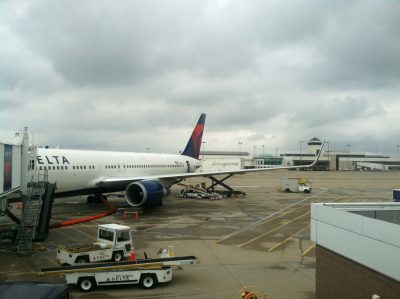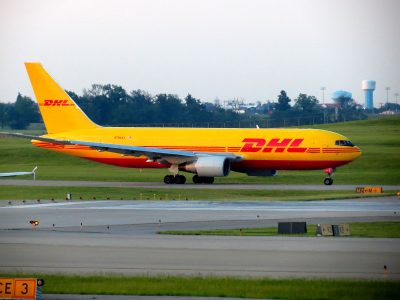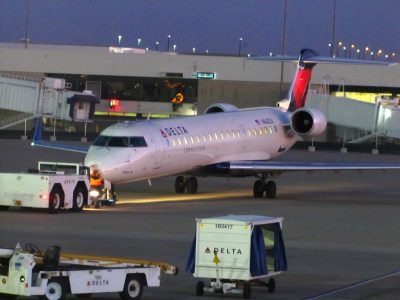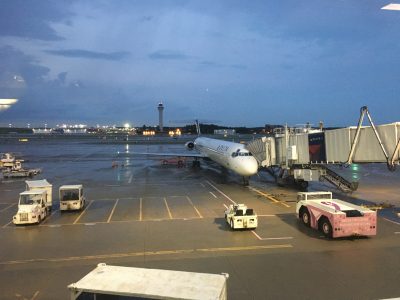
The Fall and Rise of Cincinnati / Northern Kentucky Airport (CVG) is a tale of sadness and then increasing happiness. The commercial airport was founded in 1946 and for years was known as the Greater Cincinnati Airport. “Greater” because it lies in the Greater Cincinnati area. It is actually located in Boone County Kentucky (in Northern Kentucky) and run by the Kenton County Airport Board (which is another story for another blog). Its three letter identifier is CVG, which stands for Covington, the nearest town of size. Suffice it to say that the airport enjoyed steady and sometimes leaping growth from its founding until the mid-2000s. That is when fortunes began to fall.

For years, CVG was voted one of the best airports in the United States. International travel abounded north, south and to Europe. In 2005, CVG was the 22nd busiest airport in the United States as measured by passenger boarding (called enplanements). Nine years later, it was 54th on the list. The data are summarized in Table 1.
| Year | 2005 | 2014 |
| US Ranking | 22 | 54 |
| Passenger Boarding | 11,277,068 | 2,875,844 |
Table 1
How can fortunes fall so quickly? What caused the airport to go from number 22 to number 54 and drop passenger boarding by 74%? In CVG’s case there are three primary reasons.
The Move of DHL

Cincinnati lies within a couple hours flight of a large majority of the United States’ population. This makes it an ideal location for overnight freight delivery. FedEx has their main freight hub in Memphis Tennessee. UPS operates out of Louisville, KY.
DHL was headquartered in Cincinnati until they purchased Airborne Express in 2003. They eventually moved all of their air operations from Cincinnati to Wilmington Ohio. Wilmington housed an old Air Force facility, called Clinton County Air Force Base. Airborne had used the facility since 1979.

The effect of the move was felt severely at CVG. In 2005, Cincinnati saw a nearly 29% drop in the landed cargo weight from the previous year due to the move of DHL. The year 2006 saw an additional 87% drop, Cincinnati went from the 15th biggest carrier of cargo to the 101st in just two years.
The Death of the CEO

Robert Holscher was the long time director of the Cincinnati / Northern Kentucky Airport. He first began working at the airport as a sixteen year old fire fighter. In 1975 he was tapped to be the Airport Director and for the next 33 years he built the airport through dedication and the masterful art of loving people. He in turned was loved by all who worked with him and for him. His death in 2008, at the age of 63, left the airport grieving as one would grieve for a lost parent. Holscher’s connections, particularly with Delta, had proven beneficial to both the airport and the airline.
The Delta De-Hubbing

Delta Airlines began using CVG as a hub in the mid-1980s. Atlanta, Salt Lake City and Cincinnati were all major hubs. Things began to change late in 2005 when Delta declared bankruptcy. Flights began to be cut. Things worsened when Delta announced the merger with Northwest Airlines in 2008.
Northwest operated hubs in Minneapolis as well as Detroit. The smart money was for Delta to close the Detroit hub. Detroit was a city crashing to its knees and the winter weather is much more hostile in Detroit than Cincinnati. Add to this Cincinnati’s advantage is reaching so much more of the United States population in a short flight time.
Yet, Detroit was kept a hub and Cincinnati, effectively, dropped.

Why was this decision made? I have seen no aviation related data to confirm the decision. However, as is often the case, politics seemed to rule the day. Not unique to mergers, to entice Northwest to merge, Delta offered the CEO position at Delta to the former Northwest CEO, Richard Anderson, and, it seems, in exchange for his ok of the merger. Anderson was a Northwest man, heavily invested in the Detroit Airport, which Northwest helped to build. The smart money lost. Detroit stayed open and Cincinnati was effectively de-hubbed.
So by 2014, Cincinnati had seen a drop of 74% percent in passengers. CVG had over 600 flights a day in 2004, less than 200 by 2014. What had once been the home of five terminals / concourses was down to two. How the situation was turned around will be the topic of the next blog.

I had bookmarked your story and just read it again. it was nicely written and to be reminded of my old friends Bob Holscher and Ted Bushelman. I worked at CVG from September 1963 until my airline US AIRWAYS left CVG with only a commuter operation in September 1998 which would have been my 35th anniversary. I got involved at Lunken Airport eventually chairing the Air Shows a few years while commuting to work in first Greensboro GSO and finally Columbus, OH CMH where I retired in 1999. I co-founded Cincinnati Aviation Heritage Society & (now) Museum in 2004. There may be some fodder for your blog by reaching out to me.
Charlie, Thanks for reaching out to me and for your kind words. Wow, you have had quite a career. Thanks for all your contributions to Cincinnati aviation! After this Corona Virus passes, I would be very interested in having lunch with you and sharing stories, if you would be so kind to join me.
All the Best, Daryl, AKA Doctor Aviation.
Perhaps Daryl, you or Charlie knew my father Byron Dickey ?
I am sorry, but I did not know your Dad, Byron Dickey. What role did he play at CVG?